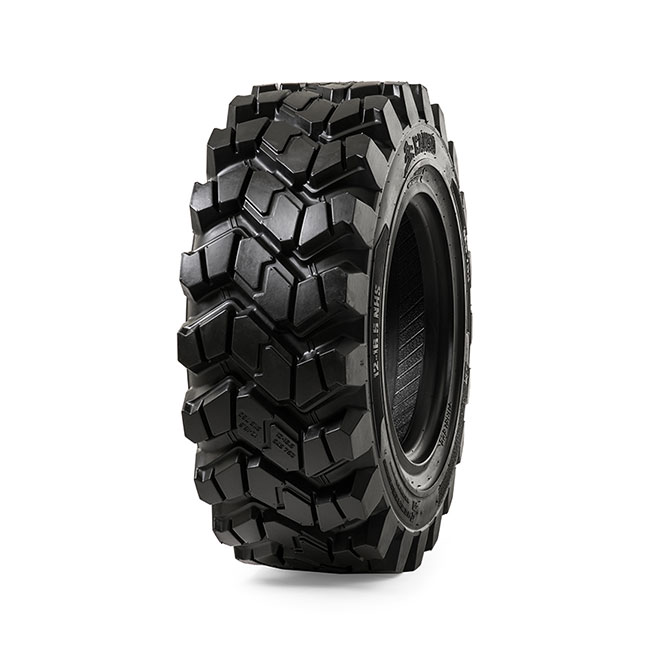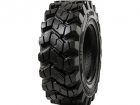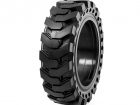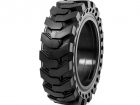
How to choose the right tires for your skid steer
By Mike Dembe
Features Tech tips technologyAre wheels spinning in your head when it comes to selecting the right tire for your skid steer loader? With a versatility and popularity that’s unmatched in the marketplace, skid steer loaders are the Swiss Army knives of compact equipment machines.

You can throw on them whatever tool is required to get the job done – buckets of all shapes and sizes, augers, palette forks, rototillers – easily and in no time. But this versatility can also present challenges from a tire perspective when you don’t know precisely what the machine will be doing, or where it will be working.
Tires are typically the most expensive consumable item on a skid steer loader, so it pays to acquire some knowledge before tire shopping. Whether you’re renting to weekend warriors digging a swimming pool in the backyard, a professional building a road, or a farmer doing a much wider variety of jobs, choosing the right tire from the options out there will minimize your costs and headaches and maximize your machine’s performance.
Choices, choices, choices
Tires for skid steer loaders fit into three broad categories. First, there are two pneumatic (air) tire options on the market. Of those, there’s bias ply tires, which are the most popular tire option found on the majority of the over one million skid steer loaders in North America active in the field today. Secondly, there are radial tires. These are barely used in the skid steer market these days because their benefits are not suited for the jobs of the machine and are typically more expensive. Thirdly, there are solid tires, which are a rising trend and becoming increasingly relevant. Together, bias ply and solid tires constitute approximately 98 per cent of the market for skid steer loader tires, so we’ll focus on them.
Bias ply technology
Skid steer users focus mainly on bias ply over radial technology. Bias ply tires have earned their popularity because they’re a cost-effective solution and offer a wide selection in terms of different styles and tread pattern options. Their sidewalls are also stronger than the sidewalls on a radial tire because the rubber plies making the tire are set at an angle (“bias”) to the direction of travel, rather than at 90 degrees. This is obviously important on construction sites where the tire is likely to encounter sharp debris and rugged terrain. For your average landscaping or construction job and other general purposes, bias ply is the go-to tire choice.
Foam-filled
When it comes to pneumatic tires, some users opt to have them filled with a polyurethane compound. This is what’s known in the industry as foam-filled tires, or simply filled tires. A two-part polyurethane is mixed together to create a thick maple-syrup-looking blend that’s then pumped into the tire to completely replace the air in the cavity. Once it’s cured, you’ve basically turned your pneumatic tire into a solid tire and can expect it to perform like the latter in terms of ride quality and flat-free operation.
Foam fill can be an aftermarket add-on at your local tire dealer, so you don’t need to make that decision at the time of machine purchase. The process is not cheap (it can range between $170 to $300 per tire), so you would have to have a real flat tire issue or flat tire aversion to have it be a viable option you would consider. It’s also always best to foam fill when the tire is new, or nearly new, to get the most out them and your investment.
Solid tires
Solid tires are all about durability. As their name suggests, they’re solid all the way through. You want to look at these tires for your more extreme-duty environments where an air-filled tire would be insufficient to handle the demands. You’ll find solid tires rolling in scrap yards, mines and demolition sites where what’s required is durability, longevity, and a flat-free operation. Many solid tires are designed with embedded apertures to allow for increased ride comfort.
Over-the-tire tracks
Technically, they’re not tires but over-the-tire track (OTTs) deserve a space on this list. With OTTs you basically wrap and then connect a rubber track around both sets of front and rear tires. In as little as 20 minutes you can convert your skid steer loader into what’s essentially a track loader. It’s an easy on, easy off, attachment that gives you all the performance and benefits of a track machine, but only when you need it. With a wider footprint, tracked machines have increased manoeuverability and stability and thrive working in deep, off-road muddy conditions where traction and flotation solutions are required. At $2,500 to $3,500 for an OTT, it’s no small investment, so you want to have some valid reasons to justify the cost.
Talk to your dealer
The best advice for a skid steer user, whether you’re a one-machine operator or you’ve got a whole fleet on the go, is to work with your local tire provider. Develop a good working relationship with them and engage in a conversation about what it is your customers will be doing with the equipment. Talk openly about past experiences with brands and any pain points you might be feeling. As a rental operator, you probably need to do all you can to prevent flat tires. Perhaps your customers encounter a lot of traction issues. Do you want to have the longest-lasting tires on the market, or do you just want cheap, round and black?
Remember there’s no perfect tire for every application and there’s usually trade-offs involved, but if the dealer has a robust understanding of the various conditions and variables that are at play they’ll be in a good position to zero in on an optimal recommendation for your needs.
Mike Dembe is executive director of product management for construction at Camso.
Print this page



Leave a Reply